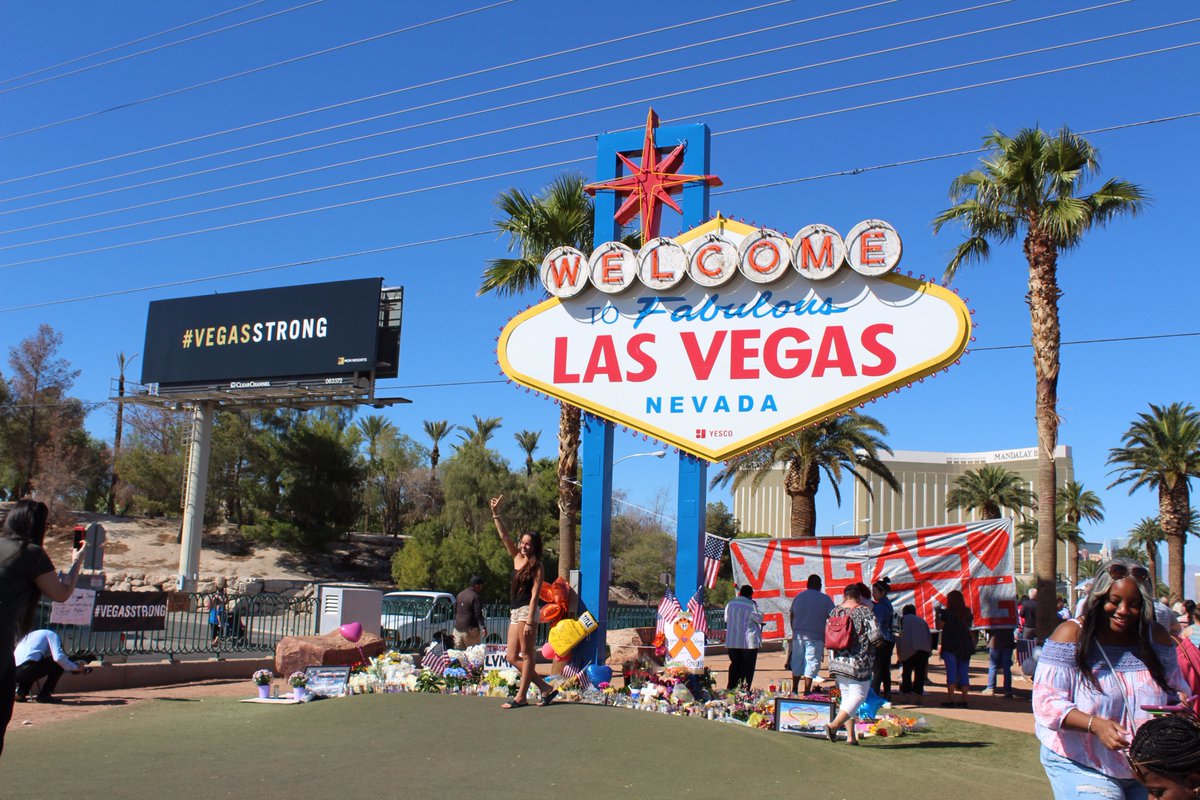As many tried to make sense of what had happened, in those first few hours after the Las Vegas shooting, social media went into overdrive.
Caught up in the vortex of information, emotion and reaction were conspiracy theories and hoaxes, deliberately thrown out there and then circulated unwittingly. Many were shared or retweeted thousands of times.
They included reports from a dozen Twitter accounts claiming to identify the shooter, using photographs of alt-right ‘comedian’ Sam Hyde. This particular hoax is becoming a familiar trope seen in the aftermath of such tragedies. Hyde has previously been ‘identified’ as the perpetrator in several mass shootings and terror attacks. After the UCLA shooting, in 2016, the social media accounts of Bill O’Reilly and VICE News were fooled by it.
Another tactic of trolls is to scour the internet for selfies, and repost them on Twitter with the words ‘missing’ and the trending hashtags for maximum exposure.
This time among those ‘missing’ were a number of teenagers who had unwittingly had their selfies taken from Instagram, a suspect connected to a Mexican murder case, and Mesut Özil, the Arsenal footballer. One account managed to rack up over 500 retweets by posting a picture of a ‘missing dad’ which featured (clothed) pictures of porn star Johnny Sins. None of these people had been caught up in the attack.
The motivation for these trolls in wanting to blur reporting on social media seems unfathomable. But if their intention is purely attention-seeking, they have succeeded. A couple of the trolls behind these hoaxes have gone on to post details of their Instagram accounts, evidently hoping to thrive on the social media attention they have generated.
Even more sinister are those accounts and websites spreading conspiracy theories within minutes and hours of the attack. Users of the anonymous bulletin board 4chan – infamous for spreading misinformation and fake news – were quick to wrongly identify the gunman. Trolls named the assailant as a man called Geary Danley, because he appears as Facebook friends with someone initially said to be a ‘person of interest’ in the case.
Danley appeared to be targeted by 4chan because he also has a lot of ‘left-leaning’ interests on his Facebook page. Other far-right ‘news’ sites followed up these reports, with Danley described as a ‘far left loon’. Their reporting was aided by Google algorithms which were quick to push the story to the top of its search, assisting further in the spreading misinformation.
Other right wing commentators were quick to build up a narrative – in the absence of evidence – that this was an Islamist attack. Wayne Root, a Conservative media personality, tweeted that the shooting was a “coordinated Muslim terror attack” with shots fired at multiple hotels. “This is real thing” he tweeted, adding “Muslim terror”.
While Facebook has moved to crackdown on what it describes as ‘fake news’ it is not clear what measures Twitter will take to improve the reliability of information being shared on social media.
Its nature means such attacks are reported first online rather than through the traditional media. It also means a wealth of information (and misinformation) is at people’s fingertips. And at a time of crisis it is the information on Facebook and Twitter that people rely on when the authorities are often too slow to act.
There are lessons for the media, the authorities, and web and social media organisations like Google and Twitter to learn from these events. For starters, the number of verified blue-tick accounts retweeting and sharing unverified information only adds fuel to the fire.
The authorities need to be clear with information and get what facts they can on to social media as quickly as possible, to combat ‘fake news’. Finally, both Google and Twitter need to continue to analyse and tweak their algorithms to ensure the users and websites with their own sinister agenda are not the first thing people read at a time of crisis.
This article originally appeared in the The New European newspaper.

Leave a Reply